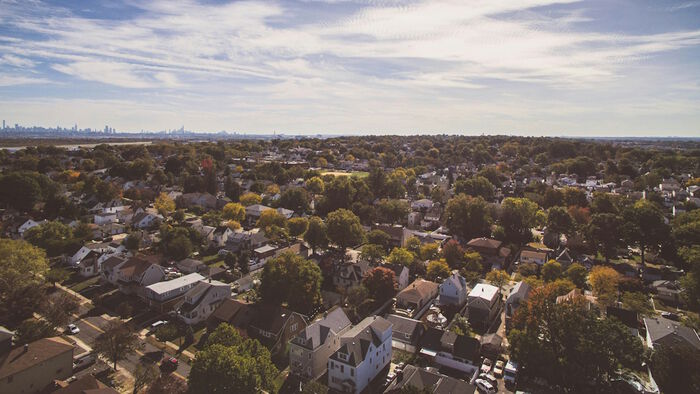Earthquake election
The Danish general election held on November 1, 2022, resembled the so-called “earthquake election” of 1973. Although the Social Democrats (S) remain the largest party and their leader, Mette Frederiksen, is likely to continue as prime minister, albeit with a new government composition, the political landscape does look quite different now. Two new parties – the Moderates and the Denmark Democrats – will be the third and fifth largest parties in parliament; at least two of the established parties experienced major electoral setbacks (the Liberals and the Social Liberals); the neoliberal Liberal Alliance made an impressive electoral comeback after barely passing the threshold in 2019; and, perhaps most surprisingly, the Danish People’s Party (Dansk Folkeparti, DF), was almost wiped out altogether.
DF was founded in the 1990s by four MPs of the right-wing populist party Progress Party, which came into parliament in the 1973 earthquake election. The party quickly became a role-model for far-right parties elsewhere due to its electoral success and political impact. Since the early 2000s, DF has acted as a reliable support party for various center-right governments, which radically pushed immigration and integration policies into a nativist direction. In 2015, DF became the largest party on the right with as much as 21.1% of the popular vote. However, after increasingly becoming part of the political mainstream, drifting leftwards on economic issues, and publicly flirting with the social democrats, the party witnessed the emergence of more radical competitors (i.e. Hard Line and New Right), marking the beginning of far-right fragmentation. Moreover, the refusal to enter government (despite being the largest right-wing party) and mainstream co-optation of immigration as a political issue, also meant that many voters seemed to prefer the office-seeking “copies” (Social Democrats and the Liberals) over the vote-seeking “original.” The Social Democrats also appeared able to reconnect with the working class by allowing long-term members of the Danish labour market to apply for early retirement. As a result, DF lost more than 50 percent of its vote share in 2019. The leader at the time, Kristian Thulesen Dahl, later admitted that it had been a mistake not to enter government.
Fragmentation reinforced
This election simply reinforced the fragmentation of the far right. The ultra-Islamophobic Hard Line (Stram Kurs), which gained 1.8% of the vote in 2019 despite campaigning on the physical removal of (almost all) Muslims from Denmark, was unable to run for election this time. The other competitor from 2019, New Right (Nye Borgerlige), increased its vote share from 2.4% in 2019 to 3.7% in 2022. The New Right continues to mobilize former DF-voters through a combination of nativist policies with a neoliberal agenda, referred to as the “winning formula” by Herbert Kitschelt in the 1990s. Survey data suggest that as many as one in five of New Right supporters voted for DF in 2019.
The main contributor to fragmentation, however, is one of the new parties: the Denmark Democrats (Danmarksdemokraterne). The party was founded in June 2022 by Inger Støjberg, a former minister of the Liberal Party who was impeached by parliament in early 2021 after illegally instructing the Danish Immigration Service to separate asylum-seeking partners where one partner was under the age of 18. Although it has existed for only a few months, the party gained 8.1% in its first election. The party’s profile is distinctly nativist, but also with a clear agrarian populist flavor, where urban elites are contrasted with hard-working citizens in rural areas. While the party is popular among some voters who previously voted for the Liberal party, a larger share of its voters used to vote for DF. Moreover, the party has not only been able to mobilize former DF-voters, but also recruited well-known DF-politicians, most notably two of the 1995 DF-founders, who have been prominent MPs ever since. Furthermore, former DF-leader Kristian Thulesen Dahl, who is no longer in politics, joined the election vigil of the Denmark Democrats, clearly showing where his sympathies lie.
DF is now the least popular of the three far-right parties in parliament. Despite campaigning on the so-called “new winning formula” (welfare chauvinism and nativism, with more centrist economic policies), the party barely passed the electoral threshold, gaining no more than 2.7% of the votes. In one of its previous strongholds, the electoral district Sjællands Storkreds, it has lost more than 100 000 votes in the two most recent elections: from 134 195 in 2015, to 56 697 in 2019, and 22 354 in 2022. Faced with an existential threat after a major internal leadership struggle and prominent MPs resigning and switching to the Denmark Democrats, the party leader Morten Messerschmidt breathed a sigh of relief when all votes had been counted, commenting “we are still standing".
The good, the bad, and the ugly
By focusing on different issues and promoting different positions on economic policies, the three far-right parties can attract different kinds of voters. While all three parties mainly mobilize voters with low levels of education and those working in the private sector, a recent survey shows that they have distinct profiles when it comes to gender, age, occupation and, to some extent, position in the housing market (a proxy for affluence). DF is disproportionally supported by women, the oldest cohorts (over 70 years old), lower functionaries, pensioners and the unemployed. DF’s voters are also less likely to own the house where they live compared the voters of other far-right parties (as well as other mainstream parties). New Right is far more popular among men, younger and middle-aged voters, students, self-employed, workers, while attracting very limited support among pensioners. The Denmark Democrats are also male dominated, but less so than New Right, and with a very different age profile. Their typical voter is middle-aged or old. In fact, the party hardly mobilizes any voters below 30 years old. Voters are typically pensioners just as DF, though the party also seem able to attract some workers. Almost two-thirds of their voters are likely to own the house where they live, which is not much different from the mainstream Conservative party. To some extent, the voter profiles of the three parties resemble the typology developed by Koen Damhuis in his book Roads to the Radical Right, which characterizes far-right voters by either hard-done-byness (Danish People’s Party), contributionism (New Right) or radical conservatism (the Denmark Democrats).
Fragile construction
The Danish experience shows, first, that despite the nativist turn of mainstream parties and public policies, there is still a demand for more far-right parties. The combined support for DF, New Right and the Denmark Democrats is 14.4%, which is more than what DF has received previously, except for the impressive result in 2015. It also shows that large far-right parties – like DF was less than a decade ago – are likely to be fragile constructions, particularly when issues other than immigration dominate the agenda. This will make the traditional blurring strategy more difficult as the composition of the electorate (the combination of authoritarian working class and petite bourgeoisie) is divided on socio-economic issues. In line with this observation, a survey among party members of DF in 2012 showed united views on nativist and authoritarian issues, but a clear split on economic issues. When immigration became a less salient issue in Denmark due to all major parties accepting one of Europe’s strictest immigration and integration policies, DF had to turn to other issues. For example, this electoral campaign was dominated by various crises (health care, energy, climate, and inflation) largely irrelevant to nativism. Facilitated by a low electoral threshold, this is likely to result in fragmentation of the far right. The Dutch case points in the same direction, with a low electoral threshold and three far-right parties in parliament (Wilder’s Party for Freedom, Forum for Democracy and JA21).
Finally, the development in Denmark suggests that, while it seems difficult to become a stable far-right catch-all party, at least within multi-party systems with low electoral thresholds, it does not necessarily mean that the far-right agenda is weakened. On the contrary, the emergence of a wide range of different far-right parties with different economic profiles and different approaches to taking on government responsibility might make far-right parties electorally more stable and politically influential.
.jpg)

.jpg?alt=listing)


